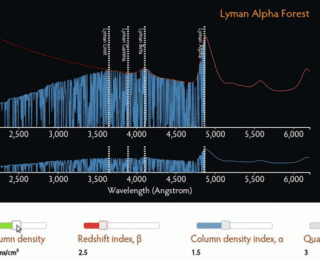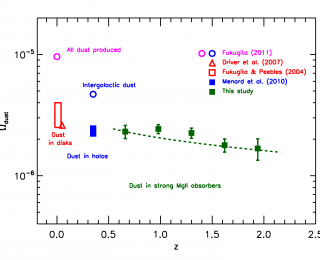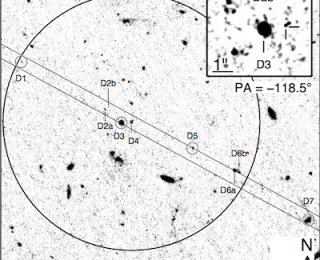
by Guest | Jul 21, 2013 | Classics, Daily Paper Summaries
Gas in the Universe went from being mostly neutral to mostly ionized as the first galaxies formed, and the signature of this process is imprinted in quasar spectra. The review of the classic paper by Gunn & Peterson continues in this second in the three-part series.

by Guest | Jul 14, 2013 | Classics, Daily Paper Summaries
This guest post, the first in a three-part series, reviews the classic article by Gunn & Peterson (1965). This paper proposed several fundamental ideas in cosmology, including using distant quasars as “flashlights” to observe the diffuse gas between galaxies.

by Elisa Chisari | Feb 2, 2013 | Daily Paper Summaries
Dust is really ubiquitous in the Universe: it is everywhere from our Solar System to stars and the interstellar medium. However, the observations of dust in galaxies fall short of the prediction of how much dust there is in the Universe. In this work, the authors try to alleviate this problem by estimating the amount of dust present in clouds of gas that inhabit galaxy halos while they look for clues regarding the origin of these clouds.

by Allison Strom | Jul 29, 2012 | Daily Paper Summaries
Using a combination of spectra from gamma-ray burst afterglows and photometry and spectroscopy of nearby objects, astronomers have found the galaxy counterpart to at least one high-redshift absorption system, bumping the total number of such galaxies from nine to ten.

by Allison Strom | Mar 12, 2012 | Daily Paper Summaries
Researchers at Caltech have used data from the Keck Baryonic Structure Survey to place quantitative constraints on the circumgalactic medium around galaxies at z~2. Measurements like these help us fine-tune our understanding of the interplay between gas and galaxies and, ultimately, galaxy formation and evolution.

by Elisabeth Newton | Apr 27, 2011 | Daily Paper Summaries
As the light from these distant objects propagates towards us, it encounters metals in the intervening IGM that superimpose absorption lines on the quasar’s spectra. By looking for metal absorption lines in the spectra of high redshifts quasars, we can learn about the metal content of the IGM. This paper by Simcoe et al. considers the spectra of 7 quasars with redshifts greater than 5.5. The moderate-resolution, near-infrared spectra were obtained over the past year with the FIRE spectrograph.






